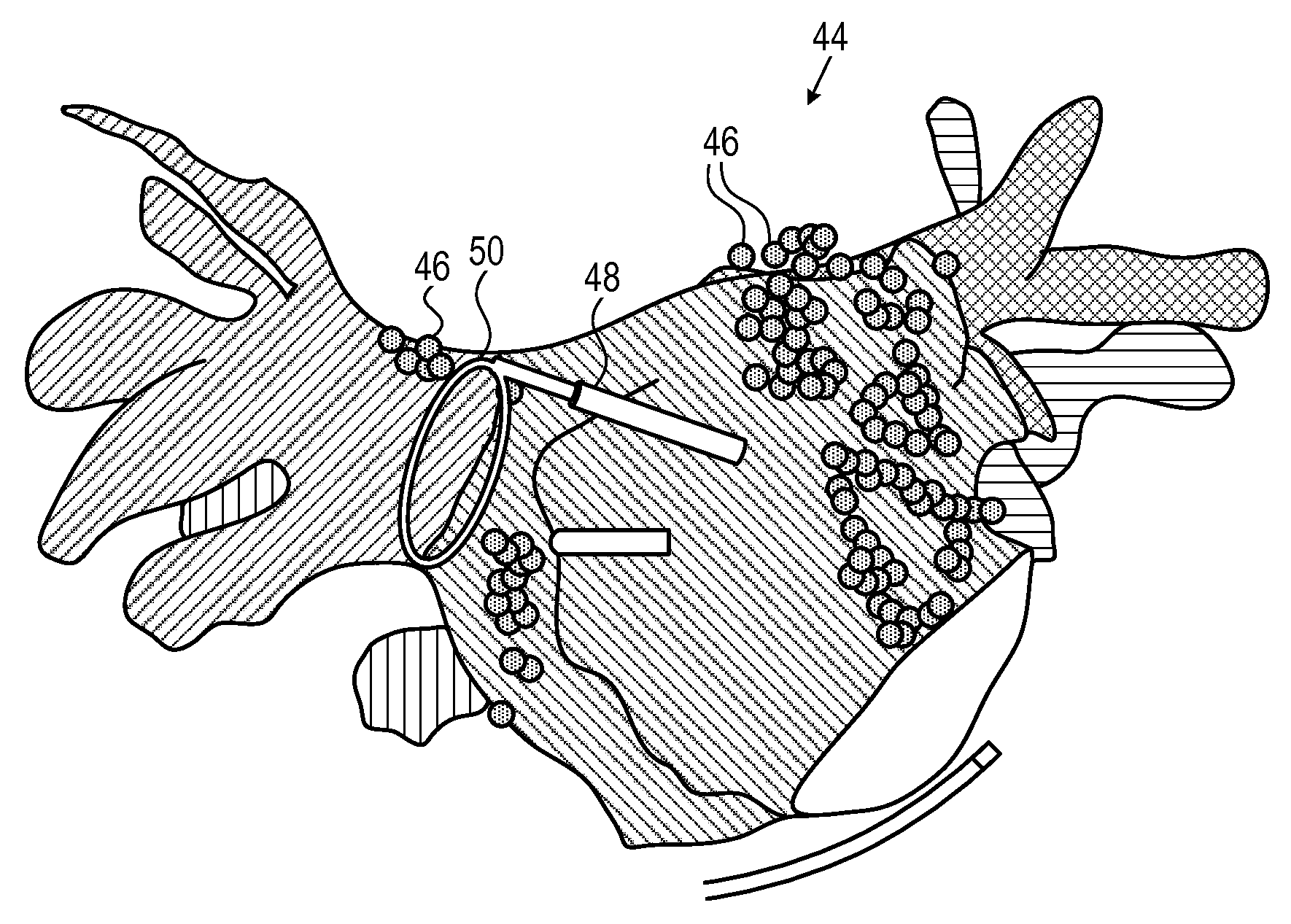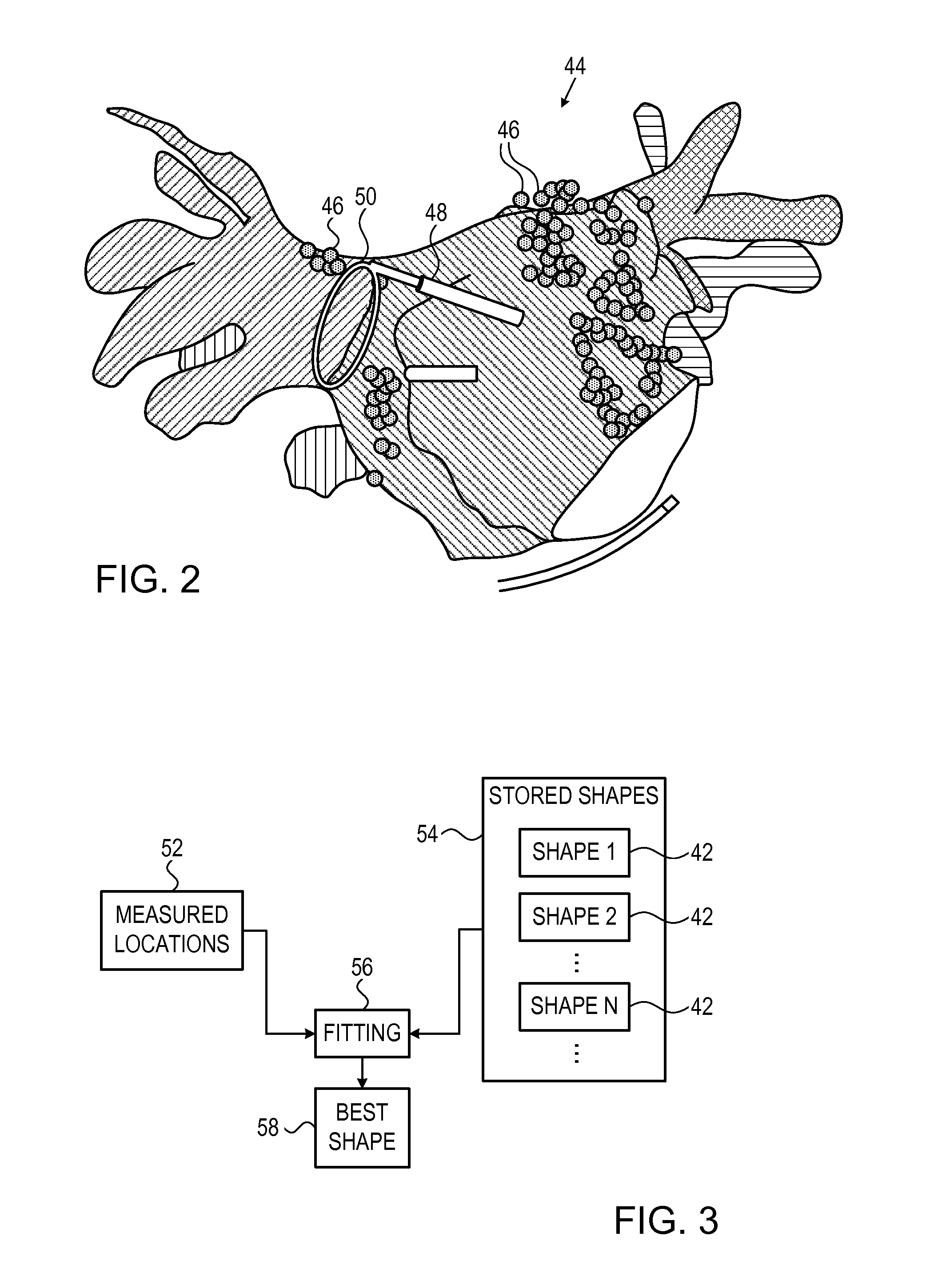Model based reconstruction of the heart from sparse samples
a heart model and sparse sample technology, applied in the field of medical imaging, can solve problems such as asynchronous rhythm and disruption of normal cardiac cycl
- Summary
- Abstract
- Description
- Claims
- Application Information
AI Technical Summary
Benefits of technology
Problems solved by technology
Method used
Image
Examples
first embodiment
[0069]In this embodiment, the atrium shape is represented as the isosurface of a field function, defined at all points within a bounding domain. Each point is transformed into the internal coordinate systems of the model, by applying a series of coordinate transformations such as those described below. The contribution of each anatomical part is then computed on the transformed coordinates. The final field function is computed by blending the contributions of the anatomical parts. The coordinate transformations and field formulae of one realization of this embodiment are described in detail below,
Coordinate Transformations.
Bounding Sphere Transformation.
[0070]A point t, given in the patient coordinate system, is transformed to a domain bounded by the unit sphere, by applying transformation Tbounds
xskewed=Tbounds(t)
[0071]In one embodiment, an affine transformation is used. The transformation parameters are chosen such that all transformed points of interest are inside the unit spher...
second embodiment
[0133]In another embodiment of the invention, a nonlinear parametric model is fitted to the data using a standard nonlinear optimization method. The approach, in general terms is as follows:[0134](a) Define a parametric model of the shape with small parameter space.[0135](b) Define statistical research-based constraints and / or parameter dimensionality reduction formula.[0136](c) Fit to the data (optimization) using a cost function and optimization schedule, that incorporates both shape fit to data and statistical likelihood terms.
[0137]Shapes 42 may be defined in several ways, e.g., mesh based, point based, graph based.
[0138]During a model generating procedure some, possibly few, and possibly high noise, measured locations of the wall of a patient's left atrium are compared with the stored shapes, and with the known relationships between the sub-structures, in a fitting procedure. The types and extents of the changes applied may be predetermined, and are typically based on measured ...
PUM
 Login to View More
Login to View More Abstract
Description
Claims
Application Information
 Login to View More
Login to View More - R&D
- Intellectual Property
- Life Sciences
- Materials
- Tech Scout
- Unparalleled Data Quality
- Higher Quality Content
- 60% Fewer Hallucinations
Browse by: Latest US Patents, China's latest patents, Technical Efficacy Thesaurus, Application Domain, Technology Topic, Popular Technical Reports.
© 2025 PatSnap. All rights reserved.Legal|Privacy policy|Modern Slavery Act Transparency Statement|Sitemap|About US| Contact US: help@patsnap.com



